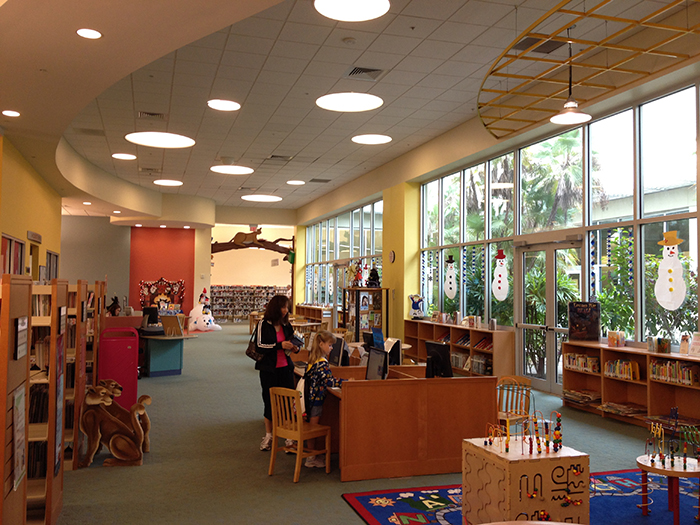Great Libraries Come in All Sizes

While people residing in many areas of the United States were able to look out their windows and enjoy a white Christmas, my family and I had a much different experience. We spent the holidays at our family’s vacation home in Punta Gorda, Florida. This town is located in Charlotte County, Florida, along the gulf coast of the state between the much larger cities of Ft. Myer’s and Tampa.
During my visit, I was pleased to learn that this community of just over 160,000 residents benefits from the presence of some great public libraries. Clearly, the local library system is valued in Charlotte County, as total resident library card-holders number over 108,000 – a full 68 percent of the total population1.
The Charlotte County Library System has four total locations, with one each situated in the towns of Englewood, Port Charlotte, and Punta Gorda. As it happens, the Englewood branch is presently in the midst of a significant construction project that will ultimately add a new addition to the building. The system’s remaining location – the Mid-County Regional Library (also located in Port Charlotte) – is the newest and largest library available to the citizens of Charlotte County.
During my holiday vacation, I had the pleasure of receiving a guided tour of the Mid-County Regional Library, courtesy of Anne Shepherd, who directs the library system. In her capacity as Librarian & History Division Manager for Charlotte County Government, Shepherd also oversees the local historical center and related historical sites. Her extensive experience as a library director has had a particular focus on working as part of library systems that were conducting significant renovation and/or expansion projects.
The Mid-County Regional Library was completed in October 2005; a little over one year after Hurricane Charley devastated the area. This library was built in what used to be a local grocery store, at a cost of $8.6 million. This 42,000 square foot facility has some wonderful amenities, such as an extensive children’s section (shown in the accompanying photograph), a senior-friendly large print books collection, and even a dedicated genealogy section. This special collection is primarily operated by the Charlotte County Genealogical Society, an organization that also coordinates a series of classes on this subject that are available to the general public.
Beyond these services, the Friends of the Charlotte County Library System operate bookstores within each branch. These sites collect and re-sell donated books, as well as some that are withdrawn from the library’s collection. According to director Shepherd, the friends raise just about $120,000 a year in support for the library system. This figure is quite impressive, given that the total operating income for the system as a whole tops out at $2.9 million for the most recent fiscal year1.
Given the relatively small size of the population in Charlotte County, the library system is heavily used by area residents. In the course of an average year, the Charlotte County Library System circulates just under 900,000 total items2. The 164 public-use computer terminals generate 9,000 uses a month system-wide3. During my recent visit, Shepherd informed me that on December 26th (the day after Christmas, of course) all four of her library locations circulated about 8,000 items overall.
During my recent visit, I saw a library system that has managed to thrive and remain quite relevant, even as some much larger library systems in other parts of the country have struggled. Clearly, Charlotte County’s libraries are a model for how smaller communities can have libraries that are just as successful and responsive to customer needs as the nation’s largest urban library systems.
References
- Florida Department of State, Division of Library and Information Services – FY 2012 Annual Statistical Report Submitted by the Charlotte County Library System.
- Ibid.
- Ibid.












